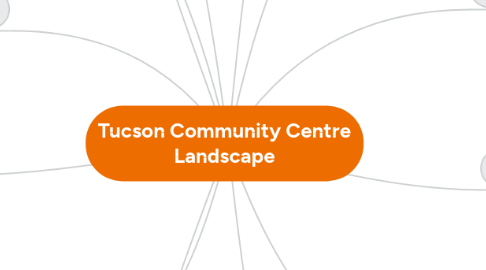
1. Designed by: Garrett Eckbo
1.1. American Landscape Architect
1.1.1. Believed that experiential factors - sight, sound, smell, touch, overall feeling, psychological reaction- are as important as economic, technical, and functional factors
1.1.1.1. Every single designed landscape should respond to the needs of the users, taking into account the surrounding, neighbourhood, the region and beyond)
1.1.2. Felt a strong affinity for the developing ecological sensitivity of the twentieth century
1.2. Known for his interest in designing “people places” and for introducing arid-land and native plants into his designs.
1.3. Recognised the unique identity of Tucson as a city of rich cultural and ecological heritage
1.4. One of the 1st landscape architects to recognise the unique chanllenges of a desert environment
2. Usage
2.1. Provides an open core for large festivals and events
2.2. Recreational opportunities
2.3. Cultural centre for the citizens of Tucson
2.4. As a catalyst for economic, redevelopment, attracting and retaining the technology firms
3. Project sections:
3.1. Fountain Plaza
3.2. Upper Plaza
3.3. Walkway
3.4. Viente De Agosto Park
4. How did it come about?
4.1. World War II
4.1.1. Led to urban renewal efforts
4.1.1.1. The Development of the Tucson Community Centre complex
4.2. Influenced by the success of Eckbo's plan for the Furton Mall(Fresno, California), he was asked to design the open spaces for the Tucson Community Centre
5. Award
5.1. The American Society of Landscape Architects Honour Award (1978)
6. Design
6.1. Intended to transcend axial symmetry and a two-dimensional plan view through balanced equilibrium within three-dimensional space
6.1.1. The use of level(explore three-dimensional space)
6.2. The balance between man-made or organic materials and the roughness of the natural boulders create a dynamic balance between formal and informal elements
6.3. Materials integrity and character
6.3.1. Hardscape
6.3.1.1. Bricks, concrete, stone, metal, natural rock, ceramic tile
6.3.2. Softscape
6.3.2.1. Trees, plants, turf, water
6.4. Understanding of the continuum of space
6.5. Nature of people and their needs within the landscape (Classic Mid-Century Modern Design)
7. Site Comparison:
7.1. Fulton Mall, Fresno, CA (Garrett Eckbo)
7.2. Union Bank Square, Los Angeles, CA (Garrett Eckbo)
8. Completed in 2 stages: 1971 &1973
8.1. High degree of integrity (artistically & technically)
8.2. Held up well for 4 decades
8.2.1. A section of the originally designed waterworks was never constructed due to budgetary constraints
9. Location: Tucson, Arizona, US
9.1. Complements El Presidio Park & Jacome Plaza
9.2. Approximately: 5.75 acres
9.2.1. Represents one of the largest areas of open space in downtown Tucson
9.3. Surrounded by cultural venues
9.3.1. the Arena
9.3.2. the Leo Rich Theatre
9.3.3. music hall
9.3.4. the historic Rialto Theatre
10. Movement: Modernist Landscape Architecture
10.1. Eckbo led the rebellion against the formal and decorative Beaux Arts tradition that dominated landscape practice at the beginning of the 20th century.
10.2. Modernism point of departure: the site, the client, the program, the materials, the architecture, the technology, geographic character
10.3. Forms and arrangements drawn from: site characteristics, climate, materials, cultural needs
10.4. Designs are imaginative yet socially and environmentally responsible
10.5. Role of tradition: to provide inspiration and benchmark for achievement
10.6. 3-dimensional form, working with space from the inside out rather than from the outside in
11. Political
11.1. Urban renewal tore inner cities apart(1960s)
11.1.1. Destroyed cultural heritage even as it posited a bright future for downtown areas.
11.1.1.1. Ironically, led to historic preservation movement
11.1.1.1.1. National Historic Preservation Act 1966
12. Historical Preservation
12.1. History of Tucson
12.1.1. Restless migration of people and ideas
12.1.2. Integration of north and south, east and west
12.2. Eckbo was able to draw together significant aspects of Tucson's environment, and its cultural and Anglo/Mexican heritage
12.3. Offers a unique opportunity to achieve a culturally rich future within a remarkable historic context
13. Today?
13.1. Precedent still standing
13.1.1. Requires Site treatment (conform to The Secretary of the Interior’s Standards for the Treatment of Historic Properties with Guidelines)
13.1.1.1. Protection and stabilisation of the Tucson Community Centre landscape
13.1.1.1.1. Renovation is more cost effective than new construction
